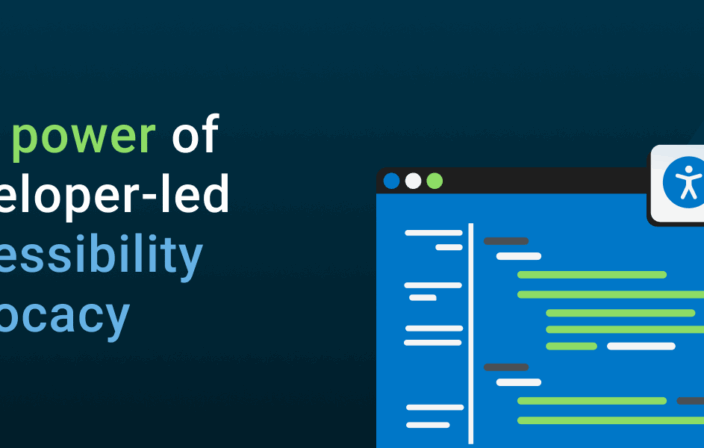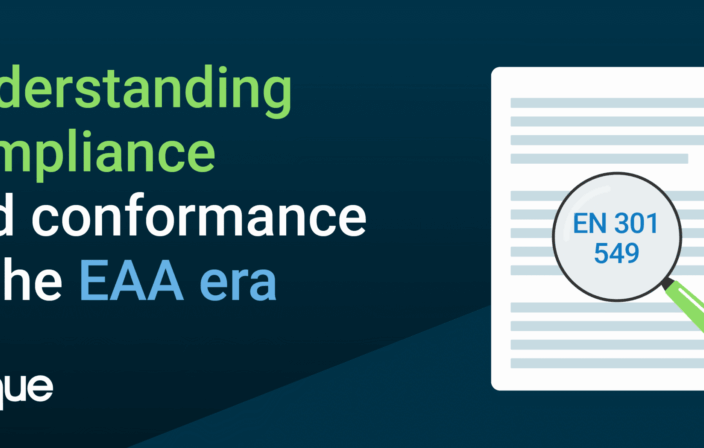
My colleagues and I believe in sustainable accessibility efforts. We’ll hold your hand through those early projects, but, ultimately, we want to equip you and your team to manage your own accessibility. But having the tools and expertise is only half the battle.
Just as buying and learning how to operate a treadmill won’t improve your health, knowing how accessibility fits into your development process and buying testing tools won’t make your software accessible. You have to actually do the work, and doing requires motivation. Unfortunately, as many treadmill owners know, motivation is elusive. You have to cultivate it. You plan a routine, you find ways to make yourself accountable, you set reachable goals, and you remove any barriers to getting started.
At the organizational level, this means establishing leadership, developing internal accessibility policies and practices throughout the organization, and equipping your teams for success.
Find Your Accessibility Champions
To build a culture of accessibility, you need leadership in all the key divisions and departments of your organization. This doesn’t necessarily mean hiring someone to manage a department’s accessibility full-time. Your accessibility leaders don’t have to be accessibility experts, but they do have to be aware of the work involved and what they are accountable for.
Nearly everyone in the organization is responsible for accessibility at some level.
Your leaders are responsible for making sure individual team members know what their responsibilities are and that they are equipped to deliver. This could mean providing training resources, purchasing tools, getting expert support, etc.
Here’s a breakdown of how leaders in different divisions contribute to a culture of accessibility. As we mentioned in Building Your Core Accessibility Team in 5 Steps, ideally you’ll have a point-person for each team.
- Executive Level: Executive leadership is responsible for supporting the program and ensuring that that accessibility is incorporated into their organization’s identity and business goals.
- Product and Project Managers: Product and Project Managers might have the heaviest lifting to do – it’s their job to ensure that accessibility testing and remediation are actively incorporated into the planning and building of products and deliverables.
- Content Creators and Contributors: Content creators need to develop basic skills to ensure that the web content, documents, emails, etc. that their generating is accessible. This goes for internal as well as external communications. It can also mean ensuring that any templates or components generated by 3rd party content management systems are accessible.
- Design (Visual, Interaction, User Experience): You can save your team so much time and tedious remediation work if you can catch accessibility issues in the design phase. Accessibility should be a consideration in when establishing brand colors and style guides (watch out for color contrast!), in the development of UI components and templates, and in the creation of any print or marketing templates. Identifying accessibility issues in the wireframing stage will ensure that your team can come up with solutions before any code gets written.
- Development: Your dev team is actually going to be building these sites and web components. They should incorporate automated accessibility testing into their integration and unit testing. With some training, they can also improve accessibility with the use of ARIA and by simply being more disciplined in their use of semantic markup.
- Quality Assurance: QA testing should include manual testing with assistive technology like screen readers, screen magnifiers, and for keyboard-only usage. The QA team also needs to ensure their accessibility issue reporting is clear and consistent so the dev team can fix issues as efficiently as possible.
- Usability Testing: Usability testing should also include testing with assistive technology. Better yet, have persons with varying disabilities perform usability testing.
- Legal and Compliance: It’s up to the compliance team to make sure that the executive team and other leaders are aware of the organization’s legal obligations with regard to accessibility. Everyone should understand the consequences of non-compliance and ensure that the company maintains a current accessibility statement and any conformance documentation that might be required.
- Human Resources: Human Resources is responsible for the organization’s hiring process and applications are accessible; internal systems for time tracking, benefits, training, intranet pages, etc. are accessible. Depending on how your organization is structured, they may also be responsible for making sure that third-party procurement policy documentation includes accessibility. Finally, HR is also critical to ensuring that accessibility training is part of onboarding and that each department or division of the organization documents their accessibility policies and procedures.
This is by no means a comprehensive list – your organization may follow a very different structure – but odds are good that the different functions do apply. The point is to make sure that each team and division within your organization is aware of the role they have to play in accessibility and that someone is accountable for each team’s contribution to your culture of accessibility.
Keep an eye out for the follow-up to this post where we’ll talk about establishing internal accessibility processes and equipping your teams for success.



